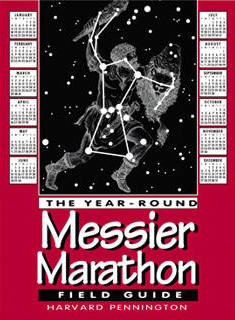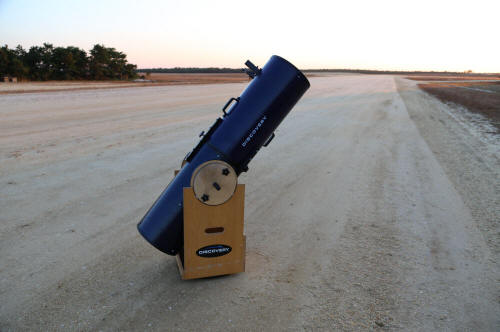Messier Marathon
 Charles Messier was the 18th century
"ferret of comets" who compiled the now-famous catalog that totals
about
110 objects. Some final additions were
made by 20th century researchers, and there's still contention about the
identity of M102 and the inclusion M110. Ironically, Messier's primary intention was to
tabulate these now-treasured objects so they could be avoided as distractions from the
primary pursuit of finding comets.
Charles Messier was the 18th century
"ferret of comets" who compiled the now-famous catalog that totals
about
110 objects. Some final additions were
made by 20th century researchers, and there's still contention about the
identity of M102 and the inclusion M110. Ironically, Messier's primary intention was to
tabulate these now-treasured objects so they could be avoided as distractions from the
primary pursuit of finding comets.
Astronomically, March is the best time of the year for a Messier Marathon in the northern hemisphere (although March weather in New Jersey can be a problem). In brief, the basic concept is to spot all of the objects on the list during a single night, although variations have been devised that may call for multiple nights, doing it with a limited instrument (such as binoculars) to make it more difficult, or for advanced observers, doing it from memory alone.
My best Marathon was in 2010, when new
moon was on Monday, March 15th at 5:01 pm EDT (goodness, more than a decade ago). Since the weather
forecast was excellent for Wednesday night, March
17-18th, I made a Marathon run at
Coyle Field in New Jersey. A total of 103 Messier objects
were found along with two comets;
here's a
tabulation. I failed to find M74 in the evening because it
was low in the west, and too dim against residual twilight and the
Philadelphia light dome towards that direction. In the morning, I failed to find M2, M30,
M55, M72, M73 and M75 because I "ran out of gas" around 5:15 am. M30
was
probably the only morning object that wasn't achievable had I persisted
a little longer (it simply rises too late in mid-March). There's also an hour span starting shortly
after midnight when I didn't find anything. That's because I was caught
up with the available Messier objects and was waiting for the next ones to rise a bit
higher, so I decided to look for Omega Centauri, which would
transit at a few degrees altitude. The latter effort was unsuccessful,
mainly because due south at Coyle Field is towards Atlantic City, NJ,
and its light dome. However, Coyle's low horizons were otherwise ideal for the
Marathon. Sadly, it's no longer accessible to
observers and it won't be in
the future (here's
a page covering my last session there on the night of April 5/6,
2016).
Left: The 12.5" f/5,
split-tube Discovery Dob
used for the 2010 Messier Marathon, shown at Coyle Field on October 7,
2015 (click the image for a larger version). As seen here, as well as for the 2010 Marathon, the scope is
strictly manual. The only pointing aid is a
Rigel QuikFinder reflex type, which projects a red bull's-eye on the
sky (concentric circles, 0.5° and 2.0° diameter). It's
the small, elongated box jutting from the upper-left of the tube. After
sitting in my shed colleting dust for several years, as of September
2022, this scope now belongs to another observer who has been using it
quite effectively.
For the 2025 Marathon, New Moon times present a bit of a dilemma. Rather than being near mid-month, the New Moons are on February 27, 2025 at 7:45 pm EST and March 29 at 6:58 am EDT (note that Daylight Saving Time begins on Sunday, March 9 at 2 am). The late February date is better for the difficult evening objects at the expense of morning objects. The reverse is true for the late March date. So, one will just have to pick a date around one of these New Moons based on the weather and the available time – or maybe both for the ardent observer.
As homage to Charles Messier, I recommend including one or more comets when doing the Marathon. At the moment, there are no impending brighter comets, although we can't complain after having easy naked-eye comet C/2023 A3 (Tsuchinshan-ATLAS) in October 2024. However, one never knows when a new comet might appear, so keep an eye on the Skyhound Comet Chasing page or COBS, the Comet Observation Database.
Here's a print-ready, blank PDF log sheet based on Harvard Pennington's sequence from his book, The Year-Round Messier Marathon Field Guide, which is not only an excellent primer on the Messier Marathon itself, but also on the use of the geometric method for easily finding the objects manually. It's useful not just for the Marathon, but any time of the year searching for Messier objects, and ultimately, the method can be applied to any celestial object. The log sheet can also be used any time of the year. The sequence won't change, but the starting point will, and a changing block of objects will not be visible depending on the position of the sun. The publisher of the book, Willmann-Bell, ceased operation in 2020, but on August 16, 2021, the AAS announced its acquisition of Willmann-Bell's assets and their titles are now available at Sky & Telescope's online store. Unfortunately, the guide seems to be perpetually out of stock. Perhaps another bookseller, like Amazon, will have it. The April 2025 issue of Sky & Telescope magazine has an eight-page article about the Marathon beginning on page 20.
While the sequence on the log provides a sensible plan of attack based on setting times in the beginning and then rise times later on, it needn't be followed slavishly. Note that on my 2010 log, eleven objects were seen out-of-order before the end of astronomical twilight by taking advantage of them being relatively bright (similarly so for my 2022 or 2023 test runs; in my advancing years, I just don't have the stamina I did back in 2010). I've also discovered that when there's trouble finding a given object, don't linger too long on it. Instead, move on to the next object or two, then come back a little later after clearing one's mind of the difficult object.
